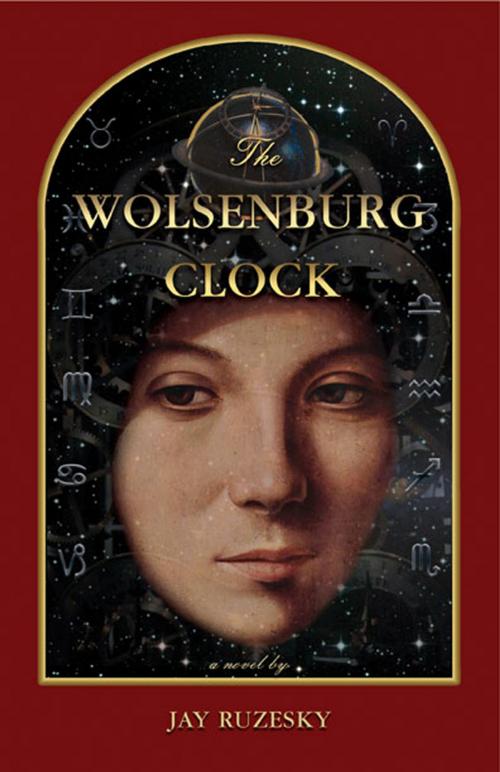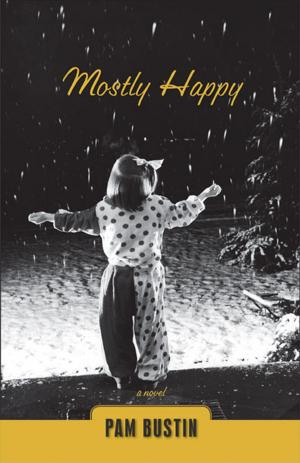| Author: | Jay Ruzesky | ISBN: | 9781927068632 |
| Publisher: | Thistledown Press | Publication: | April 4, 2013 |
| Imprint: | Thistledown Press | Language: | English |
| Author: | Jay Ruzesky |
| ISBN: | 9781927068632 |
| Publisher: | Thistledown Press |
| Publication: | April 4, 2013 |
| Imprint: | Thistledown Press |
| Language: | English |
In his debut novel, The Wolsenburg Clock, Vancouver Island poet Jay Ruzesky sets out to tell the multi-century history of an astronomical clock in a small Austrian city. The clock is a mechanical marvel for its time, viewed in much the same way as we treat current 3-D wonders like Avatar. As the hours and minutes tick by, the movement of the planets and special events are marked by clockwork figures. The novel opens during the early days of the Second World War, and Ruzesky wraps the 600-year history of the clock around the reflections of a Canadian professor who eventually becomes its caretaker. From here, he moves back in time to tell of the construction of the clock beginning in 1378, a period when few actually knew what a clock was, and through two major restorations in 1585 and 1809. Ruzesky focuses on those charged with building (or rebuilding) the clock and the toll it takes on their lives. Working with what would be cutting-edge technology for their day, and during the Renaissance portion the mystical elements of alchemy, each clockmaker toils to add not only function but entertainment, building in automata features that may only spring to life once every decade or more, and working stories and histories into the ornate carvings and decoration of the clock itself. The Wolsenburg Clock draws to a close as a crowd gathers to see what is in store to mark the new millennium. Ruzesky weaves a tale that flows almost seamlessly through four vastly different time periods. His storytelling shifts in subtle ways as he moves from medieval times toward the present—and the reader is quickly given a sense of time and place. Ruzesky develops rich characters in the span of a few pages and supplies the vivid imagery needed for readers to share the wonder of the complicated machinery being built. Enough backstory is built into the separate time periods for the reader to connect with the new characters, and Ruzesky does a good job offering a sense of closure as each section comes to an end. "The descriptions of the clock itself are fascinating and are likely to send readers to their computers for real-life examples. Ruzesky has anticipated this and has been kind enough to list a number of resources in his acknowledgements at the end of the book. The only disappointment with The Wolsenburg Clock is that the end comes so soon, Ruzesky tells his story in a mere 170 pages. Any of the historical sections of The Wolsenburg Clock could have made a fascinating novel on their own; let us hope in his next outing Ruzesky will spend more time with his readers." —Colin Holt, Victoria Times-Colonist
In his debut novel, The Wolsenburg Clock, Vancouver Island poet Jay Ruzesky sets out to tell the multi-century history of an astronomical clock in a small Austrian city. The clock is a mechanical marvel for its time, viewed in much the same way as we treat current 3-D wonders like Avatar. As the hours and minutes tick by, the movement of the planets and special events are marked by clockwork figures. The novel opens during the early days of the Second World War, and Ruzesky wraps the 600-year history of the clock around the reflections of a Canadian professor who eventually becomes its caretaker. From here, he moves back in time to tell of the construction of the clock beginning in 1378, a period when few actually knew what a clock was, and through two major restorations in 1585 and 1809. Ruzesky focuses on those charged with building (or rebuilding) the clock and the toll it takes on their lives. Working with what would be cutting-edge technology for their day, and during the Renaissance portion the mystical elements of alchemy, each clockmaker toils to add not only function but entertainment, building in automata features that may only spring to life once every decade or more, and working stories and histories into the ornate carvings and decoration of the clock itself. The Wolsenburg Clock draws to a close as a crowd gathers to see what is in store to mark the new millennium. Ruzesky weaves a tale that flows almost seamlessly through four vastly different time periods. His storytelling shifts in subtle ways as he moves from medieval times toward the present—and the reader is quickly given a sense of time and place. Ruzesky develops rich characters in the span of a few pages and supplies the vivid imagery needed for readers to share the wonder of the complicated machinery being built. Enough backstory is built into the separate time periods for the reader to connect with the new characters, and Ruzesky does a good job offering a sense of closure as each section comes to an end. "The descriptions of the clock itself are fascinating and are likely to send readers to their computers for real-life examples. Ruzesky has anticipated this and has been kind enough to list a number of resources in his acknowledgements at the end of the book. The only disappointment with The Wolsenburg Clock is that the end comes so soon, Ruzesky tells his story in a mere 170 pages. Any of the historical sections of The Wolsenburg Clock could have made a fascinating novel on their own; let us hope in his next outing Ruzesky will spend more time with his readers." —Colin Holt, Victoria Times-Colonist















